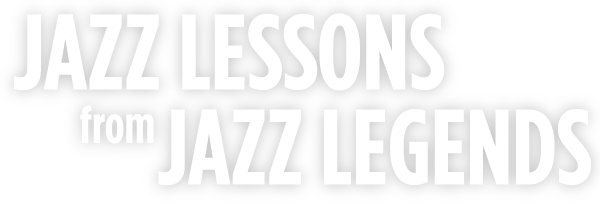Today, Adam hosts the first ever solo YHI and shows off some simple voicings you can add to your repertoire.
========================================================
I’m Adam Maness and you’re listening to the You’ll Hear It podcast – daily jazz advice coming at you, coming at you solo today for the first time ever. I’m kind of shocked that this is the first time ever, because we’ve been at this since January of last year. Peter Martin is gone most of the time and we’ve somehow managed to do a daily podcast. Don’t ask me how it’s worked out, but we have. But this week, schedules got a little too hectic and some things came up and we’re not able to be in the same room at the same time, even via video chat so I’m gonna just do the rest of the week solo for you beautiful You’ll Hear It listeners and YouTube watchers. But I’m gonna make it up a little bit. We’ll make up for the lack of Pete with this great Steinway piano. And we’ll tackle some things that we get asked a lot about here this week. And some technical things that
hopefully you’ll find useful. So, let’s dive into it.
Today, we’re gonna talk about four basic chord voicings every jazz musician should know. Now, notice I said every jazz musician and not every jazz pianist. And that’s because these four are kind of the foundation of voicings in this music and even if you don’t play piano, they can come in handy, especially for arranging and for even just, like, quick arranging on the fly. If you know what these voicings are, that can be very handy. If you are playing with a pianist who plays these voicings and you understand, sort of, the basic fundamental concepts of them, you can kind of intuitively know where they might be going or know where the harmony could take them or what their options are and that could help you play with them as a bass player, as a drummer, as a soloist, what have you. And if you’re a pianist, you probably do know these voicings. If you don’t, you should, for sure. And if you don’t know them in all 12 keys really really well, now’s the time. Don’t waste time. Because these are super, super fundamental. All right, so let’s get going.
Voicing 1 – Rooted Voicings
The first is a rooted voicing. We’re gonna call it the two plus three or the three plus two or the three plus three, whatever you want. It doesn’t really matter how you voice it on the piano. I know some people are very particular about this but for me, it’s more about the concept of how these voicings are structured. These are rooted two-handed voicings. I’m gonna say three plus three for this demonstration. And the concept is very simple. In the left hand, you have the root and the shell, if you’re doing three in the left hand, right. So, if we’re doing a two-five in E flat the first chord is F minor seven. And we want that root and shell in there so, I’m gonna do F which is the root. Now, the shell is the third and the seventh, or the seventh and the third, so we’ll do the seventh E flat. I have large enough hands that I can hit tenths, so we’ll do the third which is A flat.
So, that’s the first rule of this three plus three voicing or three plus two voicing. Is that it’s built up from the root and the shell. Nothing goes in between the root and the shell. Everything is on top of that. Now, in your right hand, now is where we add the color notes, like, we add, you know, the ninths and the elevenths and the thirteenths and all the alterations for altered dominants. So, for this F minor seventh, I’ll add the eleventh, I’ll add the thirteenth, because I love that sound and I’ll add the ninth. So, here from the bottom up I have F, E flat, A flat as the tenth and then I have the eleventh, B flat, the thirteenth, D, and the nine on top. Beautiful voicing. Very, very handy. Easy to understand.
What’s great about this too, if you don’t play the piano, is you can really see with these voicings how they’re set up, the extensions and how they sound against the root and the shell. I mean, ’cause it’s literally split by the hands.
All right, now the second chord of this two-five is the B flat seven. So, we need root and shell on our left hand. So, B flat is the root, D is the third, A flat is the seven. So, this is good voice leading by the way, from the, two. All right, so root. Three, seven of B flat. And now we’re gonna add some pretty notes. We’ll add the flat nine, we’ll add the, let’s see, sharp 11. And then we’ll add the natural 13. So, coming from that F minor seven, again, nothing but root and shell in the left hand on both of these. And then nothing but the pretty notes in the right hand, notice I’m not doubling any notes at all. Try to not double when we can. Especially don’t double
the third if it’s possible. Just for overtone reasons.
Okay. So, the one is E flat major seven. We’re gonna use the six-nine chord and this will be like a two-three. Just ’cause of where my hand is I’ll do root and third in the left hand, and then I’ll hit the sixth, which is part of the shell with my thumb in my right hand. And then the nine and the five. Nice voice leading. Pretty standard, but something that I think every jazz musician should know how to do and how to structure. Again, from the bottom up, it’s the root and then the shell and then any of the pretty notes. We’re talking the ninth, the eleventh, the thirteenth, the fifth, and then any altered extensions that you wanna do, especially on dominant chords. You could do it on the one-two with that sharp 11, but anything like that is easily built with this basic chord voicing.
Voicing 2 – Block Chords
Okay. So, the next one. Number two out of our four basic chord voicings every jazz musician should know is block chords or closed voicings or lock hands or whatever you wanna call it. This is a five note voicing. And for our purposes here, it doesn’t really matter what scale you’re using. It’s octaves. The left hand is playing just one note. The octave of the top note of the chord. And then the right hand is filling in whatever chord it is. So, in this case, we’ll do C major sixth. C, E, G, A, C. C major seven with the seven on top. B, C, E, G, B. All of these are locked hands. You know, and then there’s the sixth diminished thing, which we’ll get into actually on Friday. The Barry Harris thing. That works really well
with this style of voicing.
But these five note voicings where you have octaves spread between the hands and then filling in. You always wanna have the shell. And then another color note. You could do clusters like this. It’s pretty open. The only rule is that octave. And the variant on this is the drop two, where you take this and the second from the top, you drop it down. It’s the most common. Just a block chord.
Voicing 3 – Fourths/”So What” Voicings
Okay. Number three is fourths and “So What” voicings. These are related because fourth voicings are just voicings literally built in fourths. It could be five note, it could be four note, it could be six note. It could be built diatonically, like on a dominant chord. Here’s an F seven built from the seventh. Or it could be built in fourths with a third on the top, either a minor third or a major third. These are the “So What” voicings. Fourth. Four fourths and then the major third.
Okay, what’s crucial about these is these are easily moved
around diatonically. So, if I’m in the “So What” voicing, the fourths with the major third on top. We’re in D minor here so, diatonically, it’s all white keys on the piano and you’ve heard pianists overuse this a million times. You could just move it up diatonically and it works in other keys. And same thing with just straight up fourth voicings. Like these dominant diatonics. You get some nice clashes, you get some nice intervals. I love that one with the tritone on top.
So those are fourth voicings, “So What” voicings, crucial to understand, especially for modal harmony and stuff like that. Really get you that nice chordal sound.
Voicing 4 – Spread Voicings
All right, and so the very last basic chord voicing every jazz musician should know are spread voicings. The only rule with this is that we have a voicing in the left hand. It could be a block chord, it could be a cluster, it could be a fourth voicing. Whatever basic left hand voicing you wanna do. And then octaves in the right hand with a note in the middle. Either a fourth up from the bottom or a fifth.
So, let’s say we’re doing A flat, major nine. Literally have just an A flat block chord. A flat major seven. Then I have the ninth. I’ll do the thirteenth and then the ninth. So, my upper extensions are here in this spread. This could be an F minor seven. And then check it out. So, if I wanna do a B flat seven, I do the shell and then I’ll do an altered thing. Flat 13, flat nine, sharp 11, flat nine. To the E flat again, a two-five. So that’s the only rule. And you can move these up and down. Keeping the left hand the same. For this sound probably.
These are very, very useful. These are also really great if you’re arranging for a larger ensemble. You can build some big sounds with this and when you hear a piano player do it, get outta the way, ’cause it’s thick and it covers a lot of ground.
All right, so that’s it for the first solo You’ll Hear It, ever. Hope you enjoyed this. We’ll be back tomorrow with the piano and Friday with the piano and if you wanna hear any kind of topic from us, you can go to youllhearit.com, you could pick up your You’ll Hear It t-shirt, you could leave your seven star review only, please. And, yeah, leave us a question. You could leave us a voicemail and we’re happy to answer whatever we can. So until next time, you’ll hear it.



